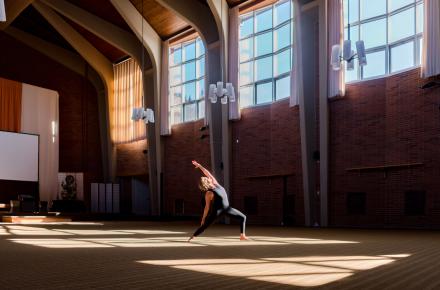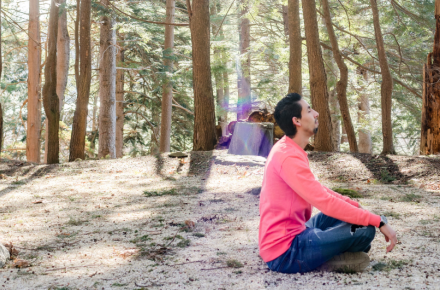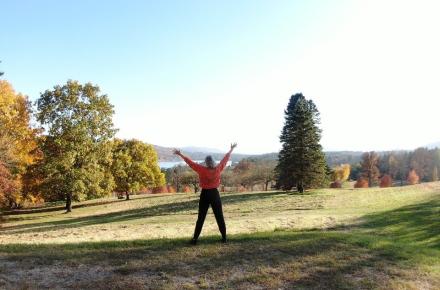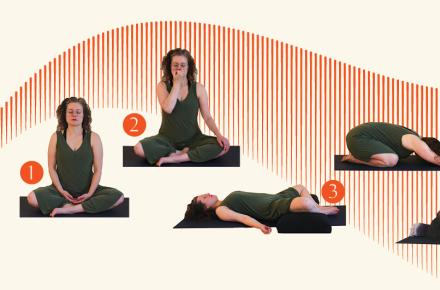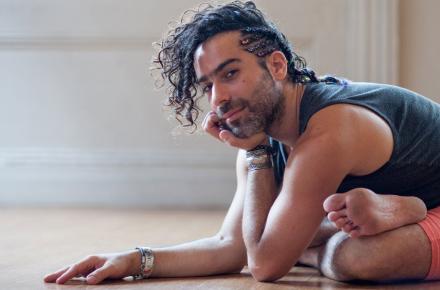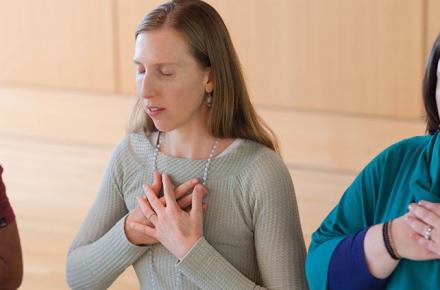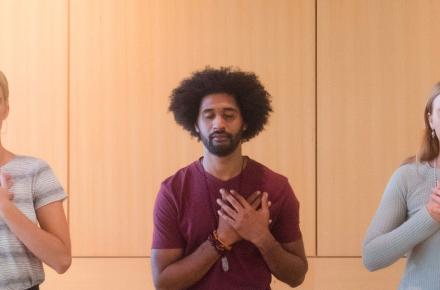What Is Kripalu Yoga? A Guide to Its Philosophy, Stages, and Benefits

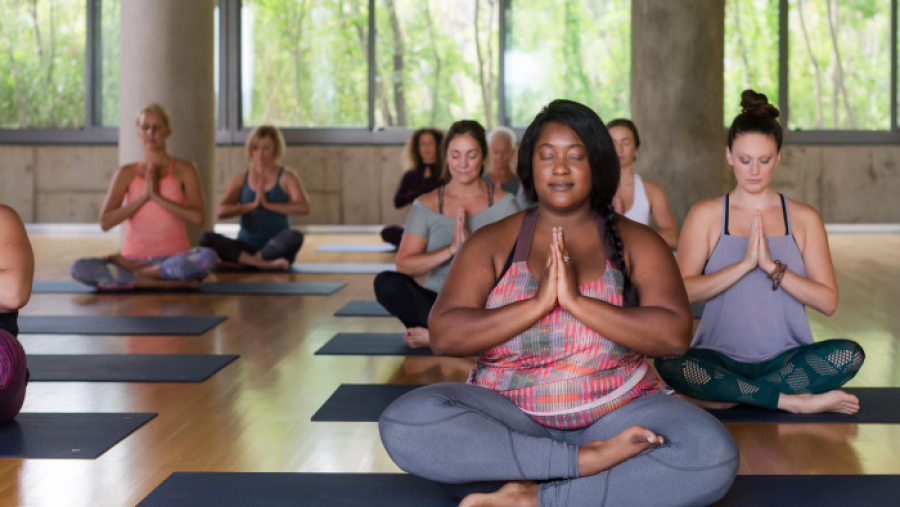
Kripalu Yoga is more than a style of yoga—it is a pathway of self-inquiry, compassion, and awakened living. Rooted in ancient yogic philosophy and adapted to meet the needs of contemporary seekers, Kripalu Yoga embraces the full human experience. It offers tools that nurture physical vitality, emotional balance, spiritual growth, and a deeper connection to the world around you.
Like most yoga traditions, Kripalu Yoga is grounded in timeless metaphysical questions: What is real? Who am I? How should I live and act to discover the truth? These questions are not abstract puzzles meant only for philosophers and mystics. They are living inquiries that touch the heart of daily life: how we relate to ourselves, how we interact with others, and how we show up in the world with presence and integrity. Kripalu Yoga holds that the answers to these questions are not simply found in books or doctrines, but in the direct experience of the body, mind, and spirit united through practice.
The Life and Vision of Swami Kripalu
Our tradition is named after Swami Kripalvananda (1913–1981), affectionately known as Bapuji to his students. Swami Kripalu was a renunciate, a spiritual master who dedicated decades of his life to solitary practice and inner exploration. He spent hours each day in meditation, pranayama, chanting, and devotional practices, surrendering himself fully to the transformative currents of yoga.
Yet even as a renunciate, Swami Kripalu’s vision was expansive. He believed that yoga was not only for ascetics but also for people living dynamic, worldly lives. He taught that ordinary individuals—parents, professionals, artists, caregivers—could use yoga as a pathway to spiritual awakening without withdrawing from society. This radical inclusivity planted the seeds for what would become Kripalu Yoga: a practice that honors yoga’s deep spiritual roots while remaining accessible and relevant to modern life.
Swami Kripalu’s teachings emphasized three qualities: disciplined practice, selfless service, and connection to community – a trio of principles known in Sanskrit as sadhana, seva, and sangha. He demonstrated through his own life that rigorous practice can awaken profound states of consciousness, but he also encouraged practitioners to cultivate compassion for themselves and others, bringing the fruits of practice into relationships, work, and service.
The Play of Prana and Chitta
At its essence, Kripalu Yoga teaches practitioners to work skillfully with two of the most powerful forces within the human experience: prana and chitta. Prana is the life force, the subtle energy that animates the body, breath, and mind. It is felt as vitality, aliveness, and the flow of energy. Chitta refers to the field of the mind—thoughts, emotions, perceptions, and memory.
Kripalu Yoga recognizes that human flourishing arises when prana and chitta are brought into harmony. Without skillful guidance, chitta can often be restless and scattered, while prana can be dissipated or blocked. Through practices of asana, breathwork, and meditation, students learn to awaken prana, directing its currents with awareness, while also quieting and refining the fluctuations of chitta. The balance of these two forces creates a state of integration in which energy flows freely, the mind rests in clarity, and deeper dimensions of the self are revealed.
The bridge between prana and chitta is witness consciousness—the capacity to observe one’s inner experience without judgment or attachment. This aspect of awareness is cultivated throughout Kripalu Yoga practice. By resting in the witness, practitioners discover they are not defined by their thoughts, emotions, or even their energetic states. Instead, they awaken to a deeper identity as the unchanging presence that perceives them all. In this way, Kripalu Yoga offers not only tools for health and well-being but also a direct path to self-realization.
The Three Stages of Kripalu Yoga Practice
The practice of Kripalu Yoga is often described through three stages that guide students from external form to inner experience:
Willful Practice (Stage One)
In this stage, practitioners learn the foundational postures, breathing techniques, and alignment principles. Discipline, concentration, and effort are emphasized, helping to build strength, flexibility, and stamina. The willful stage provides the structure necessary for deeper exploration, and the container for chitta and prana to interact.
Sustaining & Deepening (Stage Two)
As practice develops, emphasis shifts from external form to inner experience. Practitioners learn to sustain practices longer, observe the arising of sensations, thoughts, and emotions, and cultivate witness consciousness. Here, chitta and prana strengthen together, filling the container with aliveness.
Meditation in Motion (Stage Three)
The third stage of Kripalu Yoga involves surrendering to the body’s innate intelligence. This stage is sometimes called “meditation in motion,” as it invites the practitioner to allow movements, breath, and postures to arise organically, guided by the wisdom of prana rather than by conscious effort. This stage is often described as a state of grace, where practice becomes a direct expression of the inner self.
Together, these three stages create a continuum of learning and practice that is adaptable to every body and every stage of life. Kripalu Yoga’s three-stage approach creates a foundation yoga both welcoming to beginners and continually enriching for lifelong practitioners.
Philosophy in Action
At its core, Kripalu Yoga is about self-observation without judgment. This principle encourages practitioners to bring compassionate awareness to their experience, whether that means acknowledging tightness in the body, restlessness in the mind, or tenderness in the heart. By cultivating nonjudgmental awareness, students plant the seeds of compassionate self-acceptance, which in turn creates the conditions for growth and transformation.
Kripalu Yoga also emphasizes the integration of yoga “on and off the mat.” Yoga practices are not an end in themselves but a vehicle for awakening qualities such as patience, resilience, clarity, and love. Kripalu Yoga continually asks: How does what you discover in practice inform the way you live? How do you bring the spirit you cultivate in your yoga practice into your relationships, and into your service to the world? In this way, Kripalu is not only a physical practice but also a philosophy of conscious living.
A Living Tradition
Over the decades, Kripalu Yoga has continued to evolve, enriched by teachers, scholars, and practitioners who bring new insights and cultural contexts. It remains rooted in the wisdom of Swami Kripalu while responding to the changing needs of modern life.
Today, Kripalu Yoga is practiced by people of all ages, abilities, and backgrounds. It is taught in schools, hospitals, prisons, workplaces, and community centers, as well as in yoga studios and retreat settings. Its adaptability makes it a powerful tool for personal development and collective well-being.
Kripalu Yoga is also a community. Kripalu Center serves as a gathering place where seekers, teachers, scientists, and everyday people come together to explore the intersection of yoga, health, and human potential. Together, we continue Swami Kripalu’s work of reaching back to the wisdom of yoga’s oldest roots, and reaching forward towards the needs of people looking to thrive in our radically changing world.
Awake in the World
Ultimately, Kripalu Yoga invites each practitioner to embark on a journey of self-discovery. It is a path that honors discipline and surrender, the wisdom within and the power of community. It reminds us that yoga is not about perfecting postures but about awakening to the truth of who we are.
As Swami Kripalu taught, the highest purpose of yoga is not to escape life but to live it fully—with awareness, compassion, and love. Whether practiced for physical health, emotional balance, or spiritual awakening, Kripalu Yoga offers a timeless reminder: the wisdom we seek is already within us, waiting to be revealed through the simple yet profound act of practice.








